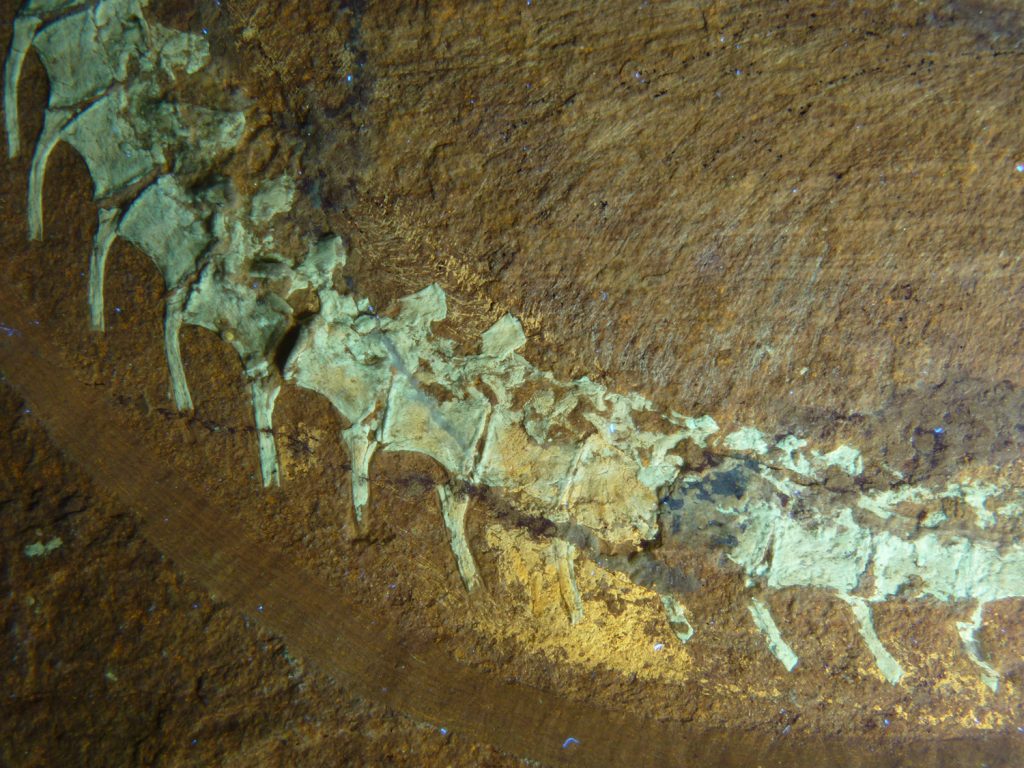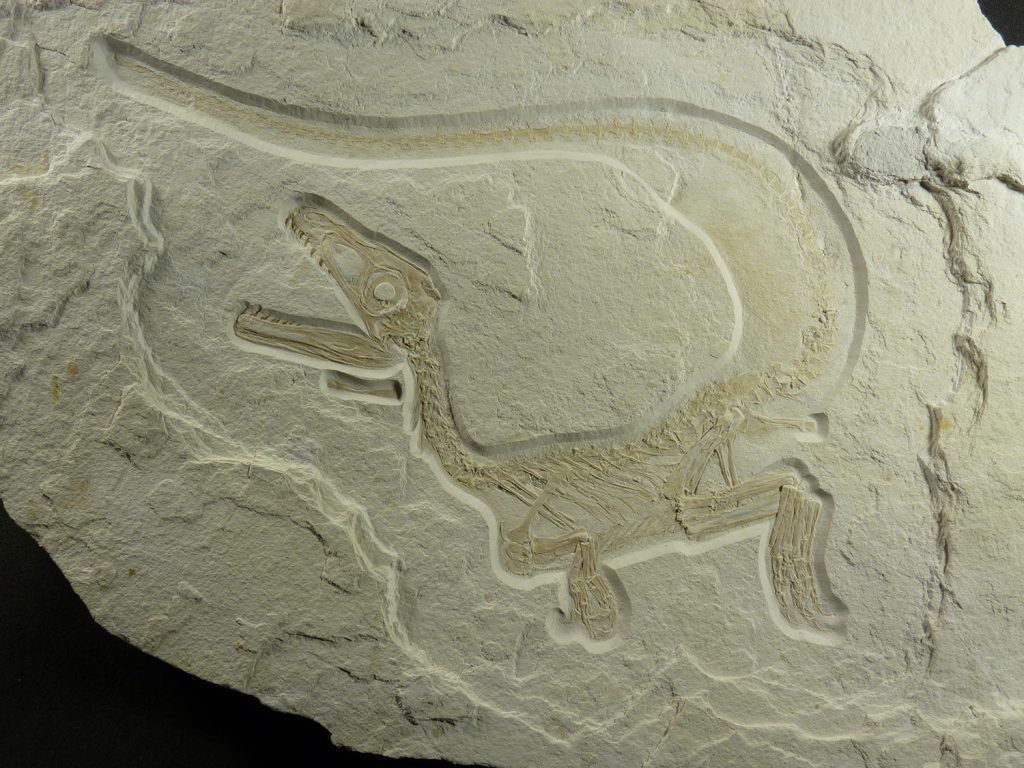Fluffy, but no less dangerous: A new, juvenile predatory dinosaur from Bavaria
Bavarian State Collection for Palaeontology and Geology
Most of us grew up with an image of dinosaurs that was dominated by the “Jurassic Park” movies or documentaries such as “walking with dinosaurs” – dinosaurs were large, though active, reptiles with scaly skin, their outer appearance resembling overgrown lizards or crocodiles. Finds of feathered, bird-like predatory dinosaurs from China in the past ten years have somewhat challenged this view, but the large predators, such as Tyrannosaurus, Allosaurus, or Megalosaurus, are still usually depicted as dragon-like reptilian monsters.
A find from the Late Jurassic (c. 150 million years ago) of southern Germany is about to change this. A German-American team led by Munich palaeontologist Oliver Rauhut of the Bayerische Staatssammlung für Paläontologie und Geologie and the Ludwig Maximilians University report that this specimen represents a juvenile megalosaurid in the online edition of the scientific journal “Proceedings of the National Academy of Sciences”. The most remarkable aspect of the find: the animal, which was found in the limestones of northern Bavaria, which are famous for their exceptionally preserved fossils, preserves remains of a filamentous plumage, indicating that the whole body was covered with feathers. “Under ultraviolet light, remains of the skin and feathers show up as luminous patches around the skeleton”, explains Helmut Tischlinger, one of the authors of the study, who also carried out the UV photography. The scientists baptized the new animal Sciurumimus albersdoerferi. The genus name refers to the scientific name of the tree squirrels, Sciurus, and means “squirrel-mimic” – referring to the especially bushy tail of the animal. The species name honours the private collector who made the specimen available for scientific study.
“All of the feathered predatory dinosaurs known so far represent close relatives of birds”, according to Rauhut: “Sciurumimus is much more basal within the dinosaur family tree and thus indicates that all predatory dinosaurs had feathers.” And that’s not all: It has already been known for a while that the flying reptiles, which are close relatives of the dinosaurs, also had a hair-like body cover, which is very similar to the filamentous feathers in the new find. Thus, it seems very probable that all dinosaurs had feathers, and our image of the gigantic reptiles has to be revised.
However, Sciurumimus is not only remarkable for its feathers. The skeleton, which represents the most complete predatory dinosaur ever found in Europe, furthermore is of a very young animal, probably a recently hatched baby. Fossils of young juveniles are rare, and thus this find allows a rare glimpse at a young predatory dinosaur. Apart from other, already known juvenile features, such as large eyes, the new find also confirmed other, so far theoretical hypotheses. “It has been suggested for some time that the lifestyle of predatory dinosaurs changed considerably during their growth”, according to Rauhut: “Sciurumimus shows a remarkable difference to adult megalosaurs in the dentition, which clearly indicates that it had a different diet.” Adult megalosaurs reached more than six metres in length and often weighed more than a ton. They were active predators, which probably also hunted other large dinosaurs. The juvenile specimen of Sciurumimus, which was only about 70 cm in length, probably hunted insects and other small and elusive prey, as evidenced by the slender, pointed teeth in the tip of the jaws. However, the small size of the specimen does not necessarily indicate that Sciurumimus was a small animal as adult. “From other finds we know that dinosaurs grew very fast”, says Rauhut: “An adult Sciurmumimus might have reached six metres or more. The find might show that large predatory dinosaurs might have been fluffy, but they were surely not less dangerous for that.”
The study was financed by the Volkswagen Foundation and the American Museum of Natural History.
Publication:
Rauhut, O. W. M., Foth, C., Tischlinger, H. & Norell, M. A. (2012). Exceptionally preserved juvenile megalosauroid theropod dinosaur with filamentous integument from the Late Jurassic of Germany. Proceedings of the National Academy of Sciences, published online; DOI: http://dx.doi.org/10.1073/pnas.1203238109
Contact:
Dr. Oliver Rauhut
Bavarian State Collection for Palaeontology and Geology (SNSB-BSPG)
Richard‐Wagner‐Str. 10
80333 Munich
Tel.: +49 (0)89 2180 6645
mobil: +49 (0)163 741 7552
E-Mail: o.rauhut@lrz.uni‐muenchen.de
Dipl.‐Biol. Christian Foth
Bavarian State Collection for Palaeontology and Geology (SNSB-BSPG)
Richard‐Wagner‐Str. 10
80333 Munich
Tel.: +49 (0)89 2180 6619
E-Mail: christian.foth@yahoo.de
Under ultraviolet light, remnants of the skin and feathers can be seen as glowing patches and fibers on the skeleton. Photo: SNSB-BSPG The researchers now gave the animal the scientific name Sciurumimus albersdoerferi. Photo: SNSB-BSPG


